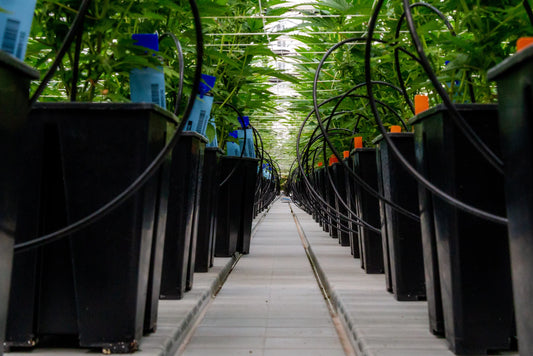
The Role of pH in Plant Growth and Soil Ecology: A Comprehensive Overview
Share
Introduction to pH: Historical and Scientific Context
The concept of pH, introduced by Danish biochemist Søren Sørensen in 1909, is a fundamental parameter in understanding chemical and biological processes. The pH scale, ranging from 0 to 14, quantifies the acidity or alkalinity of a solution. In agronomy and plant sciences, pH is pivotal because it directly influences nutrient solubility, soil microbial activity, and plant health.
Influence of Plant-Soil Interactions in the Rhizosphere
The rhizosphere, the zone of soil surrounding plant roots, is a dynamic environment where plants and soil life interact closely. Plants secrete a variety of organic compounds, known as root exudates, which modify the soil properties, including its pH. These exudates, rich in sugars, acids, and other organic compounds, facilitate nutrient exchange and shape the microbial community. This interaction, in turn, affects the bioavailability of nutrients, with the pH mediating the solubility and mobility of ions.
The Science of Exudates and Soil pH
Exudates play a crucial role in the rhizosphere's ecological balance. They can acidify or alkalize the soil environment, influencing the microbial composition and activity. For instance, acidification of the rhizosphere can enhance the availability of certain nutrients like phosphorus, which is more soluble in slightly acidic conditions. Conversely, alkaline exudates can precipitate certain minerals, affecting their availability to plants.
Nutrient Availability and pH Dynamics
Soil pH is a master variable in nutrient cycling and availability. Essential elements like nitrogen, phosphorus, and potassium show varying solubility across the pH spectrum. For example, iron (Fe) and manganese (Mn) are more available in acidic soils, while calcium (Ca) and magnesium (Mg) are more soluble in alkaline conditions. pH imbalances can lead to nutrient lockout, where plants are unable to absorb essential minerals, resulting in deficiency symptoms.
pH Variability in Hydroponic Systems
Hydroponic systems, devoid of soil, offer a controlled environment for studying plant growth and nutrient dynamics. In these systems, pH fluctuations are common due to nutrient uptake and the addition of fertilizers. Plants absorb ions from the nutrient solution, often releasing hydrogen ions (H+) or hydroxyl ions (OH−), thus altering the pH. Maintaining an optimal pH range is crucial in hydroponics to ensure the availability of all essential nutrients.
Recognizing and Managing pH Imbalances
Symptoms of pH imbalances in plants can vary, including chlorosis (yellowing of leaves), necrosis (death of tissue), and stunted growth. For example, iron deficiency often occurs in high pH environments, leading to interveinal chlorosis in young leaves. Conversely, aluminum toxicity might occur in acidic soils, damaging root systems and reducing nutrient uptake. Regular pH monitoring and adjustments, through liming acidic soils or applying sulfur compounds to alkaline soils, are vital practices to prevent and correct such imbalances.
Conclusion
The study of pH in plant-soil systems integrates chemistry, biology, and environmental sciences, highlighting the complexity of nutrient dynamics and plant growth. Historical developments in pH understanding have paved the way for advanced agricultural practices, enhancing productivity and sustainability. By comprehensively managing pH, practitioners can optimize plant health, ensure efficient nutrient use, and maintain ecological balance in both soil-based and hydroponic systems.




